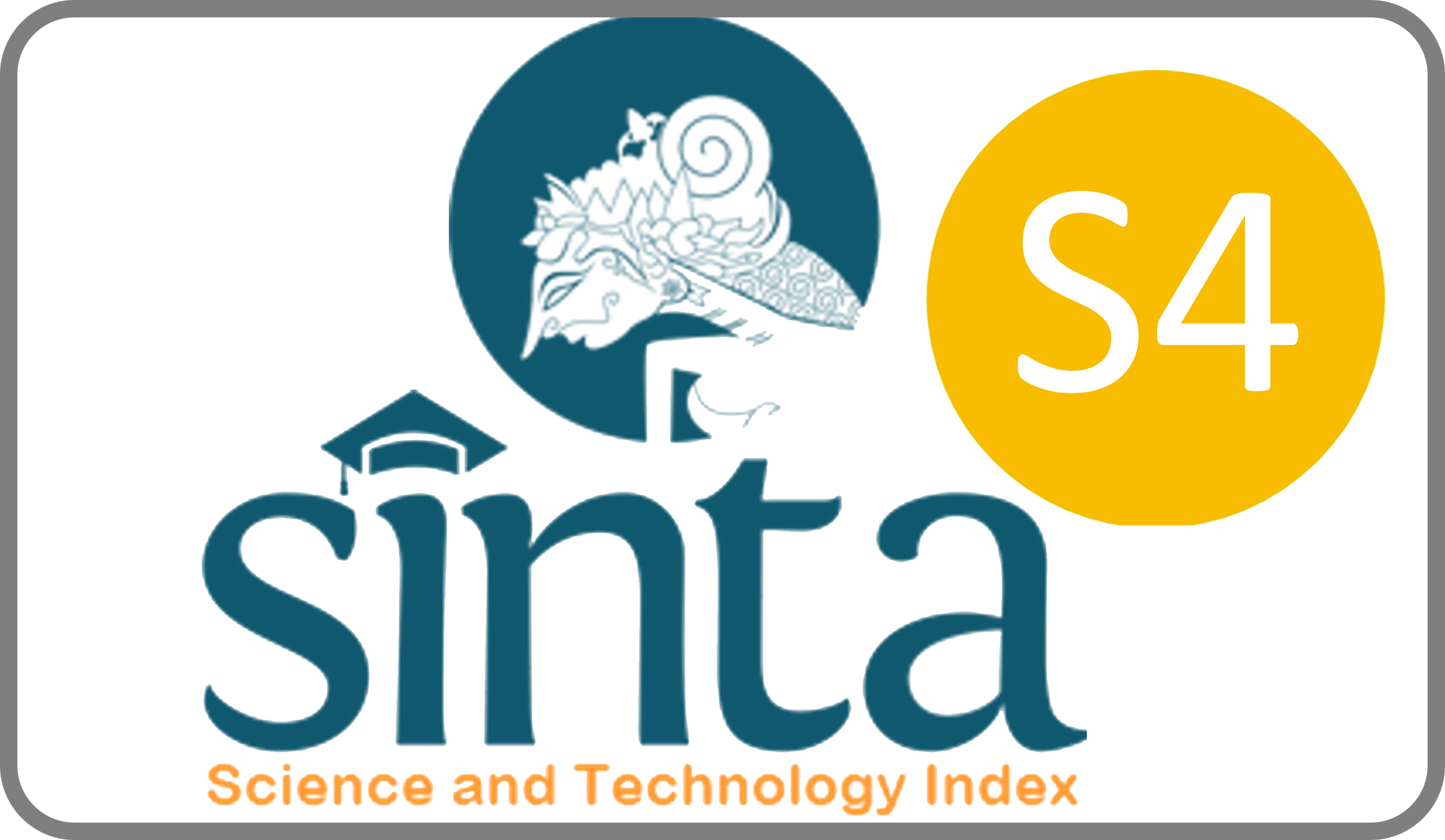ASSISTANCE FOR THE IMPROVEMENT OF THE BELOVED PET COMMUNITY WITH GROOMING SKILLS IN AN ARTISTIC MANNER IN PANGKAJENE DISTRICT, PANGKEP REGENCY
Downloads
In the world of veterinary medicine, maintaining the cleanliness of pets is one of the efforts to suppress the occurrence of zoonosis. One effort that can be done is by routinely grooming. Grooming is a hygiene treatment that includes bathing, cleaning ears, cutting nails, and combing hair. However, currently in Pangkep Regency, several problems have been found along with the increase in the number of pet lovers, one of which is the lack of knowledge of owners about the procedures for legitimate grooming. This factor then became the background for the creation of a workshop to empower pet lovers with grooming skills in Pangkep Regency. The purpose of this activity is to transfer knowledge by providing socialization and direct demonstrations regarding the procedures for legitimate grooming of pets to avoid integument diseases and conditions that can trigger the emergence of new diseases after improper grooming in Pangkep Regency. These legitimate grooming procedures can be adopted and utilized by the community, namely basic knowledge of grooming techniques that can be applied directly to pets at home. This will help owners to save on grooming costs for their pets. During the implementation of the activity, a demonstration of legal grooming was carried out on two cats, pocket books were distributed, and educational videos were shown on legal grooming technique guides. Participants who attended were 42 pet owners who were members of the Pangkep pet lovers group, where at the end of the activity session a questionnaire was filled out by the owners. Based on the results of the survey conducted, 39 were able to answer the questions from the questionnaire correctly, the rest were owners who did not follow the activity until the end due to other activities outside the location of this service. This is a reflection of the improvement in legal grooming skills in owners who previously only 8 out of 37 respondents understood the legal grooming aspect.
Bradshaw, J. W. S., & Nott, H. M. R. (2019). Grooming and social behavior in domestic cats. Applied Animal Behaviour Science, 213, 1–8. DOI: 10.1016/j.applanim.2019.01.007
Cohen, A. S., & Epping, P. L. (2018). Grooming behavior in domestic cats: Implications for health and welfare. Veterinary Journal, 237, 54–60. DOI: 10.1016/j.tvjl.2018.05.008
Day, M. J., & Maddox, T. (2017). Behavioral indicators of stress in cats: The role of grooming. Veterinary Clinics of North America: Small Animal Practice, 47(2), 223–234. DOI: 10.1016/j.cvsm.2016.11.005
Emma K. Grigg 1,* and Lori R. Kogan 2. 2019. Owners’ Attitudes, Knowledge, and Care Practices: Exploring the Implications for Domestic Cat Behavior and Welfare in the Home. Animals 2019, 9, 978; doi:10.3390/ani9110978
Feldman, E. C., Nelson, R. W., Reavill, D. R., & Scott, M. A. (2015). Feline Dermatology: The Role of Grooming. Journal of Veterinary Internal Medicine, 29(3), 893–902. DOI: 10.1111/jvim.12507
Hart, B. L., & Hart, L. A. (2018). Feline grooming and its impact on dermatological health. Journal of Veterinary Behavior, 24, 72–80. DOI: 10.1016/j.jveb.2018.09.001
Hee S Kim1 , Jin S Hong1, Chang W Park2, Kyung H Cho2 and Yoo Y Kim1. 2019. Evaluation of grooming behaviour and apparent digestibility method in cats. Journal of Feline Medicine and Surgery 2019, Vol. 21(4) 373–378. DOI: 10.1177/1098612X18783837 journals.sagepub.com/home/jfm
Judith L. Stella and Candace C. Croney. 2016. Environmental Aspects of Domestic Cat Care and Management: Implications for Cat Welfare. ScientificWorldJournal. 2016; 2016: 6296315. doi: 10.1155/2016/6296315
Kogan, L. R., & Schoenfeld-Tacher, R. (2020). The effects of grooming on feline well-being. Journal of Animal Welfare Science, 29(2), 118–126. DOI: 10.1080/10888705.2020.1710753
Kristel J. Scoresby 1 , Elizabeth B. Strand 2 , Zenithson Ng 3 , Kathleen C. Brown 4 , Charles Robert Stilz 3 , Kristen Strobel 3 , Cristina S. Barroso 4 and Marcy Souza 3. 2021. Pet Ownership and Quality of Life: A Systematic Review of the Literature. Vet. Sci. 2021, 8, 332. https://doi.org/10.3390/vetsci8120332
Mason, G. J. (2018). Grooming and its implications for feline behavioral health. Animal Welfare, 27(3), 297–308. DOI: 10.7120/09627286.27.3.297
Neilson, J. C., & Wright, J. S. (2020). Understanding the role of grooming in feline behavior. Journal of Small Animal Practice, 61(7), 448–457. DOI: 10.1111/jsap.13112
Noel AC and Hu DL. Cats Use Hollow Papillae to Wick Saliva into Fur. PNAS 2018; 115; 12377-12382.
Overall, K. L. (2013). Clinical Behavioral Medicine for Small Animals. Elsevier Health Sciences. DOI: 10.1016/B978-1-4377-1384-3.00015-1
Salla Mikkola, Milla Salonen, Emma Hakanen, Hannes Lohi. 2022. Fearfulness associates with problematic behaviors and poor socialization in cats. iScience. 2022 Oct 21; 25(10): 105265. doi: 10.1016/j.isci.2022.105265
Shelby E. McDonald1 *, Jessica Sweeney 2 , Laura Niestat 3 and Colleen Doherty 2. 2022. Grooming-Related Concerns Among Companion Animals: Preliminary Data on an Overlooked Topic and Considerations for Animals’ Access to Health-Related Services. Front Vet Sci. 2022; 9: 827348. doi: 10.3389/fvets.2022.827348
Shelby E. McDonald1*, Colleen Doherty2 , Jessica Sweeney2 , Lisa Kisiel2 , Angela Matijczak1,3, Laura Niestat4 and Maya Gupta1. 2022. Barriers to and facilitators of pet grooming among clients served by a subsidized grooming service program. Front Vet Sci. 2022; 9: 1021707. doi: 10.3389/fvets.2022.1021707.
Copyright (c) 2024 DWI KESUMA SARI, RINI AMRIANI, Dian Fatmawati, Muh. Zulfadillah Sinusi, Makruf Arif

This work is licensed under a Creative Commons Attribution-ShareAlike 4.0 International License.
JLM by Unair is licensed under a Creative Commons Attribution-ShareAlike 4.0 International License.
1. The journal allows the author to hold the copyright of the article without restrictions.
2. The journal allows the author(s) to retain publishing rights without restrictions
3. The legal formal aspect of journal publication accessibility refers to Creative Commons Attribution Share-Alike (CC BY-SA).
4. The Creative Commons Attribution Share-Alike (CC BY-SA) license allows re-distribution and re-use of a licensed work on the conditions that the creator is appropriately credited and that any derivative work is made available under "the same, similar or a compatible license”. Other than the conditions mentioned above, the editorial board is not responsible for copyright violation.


















